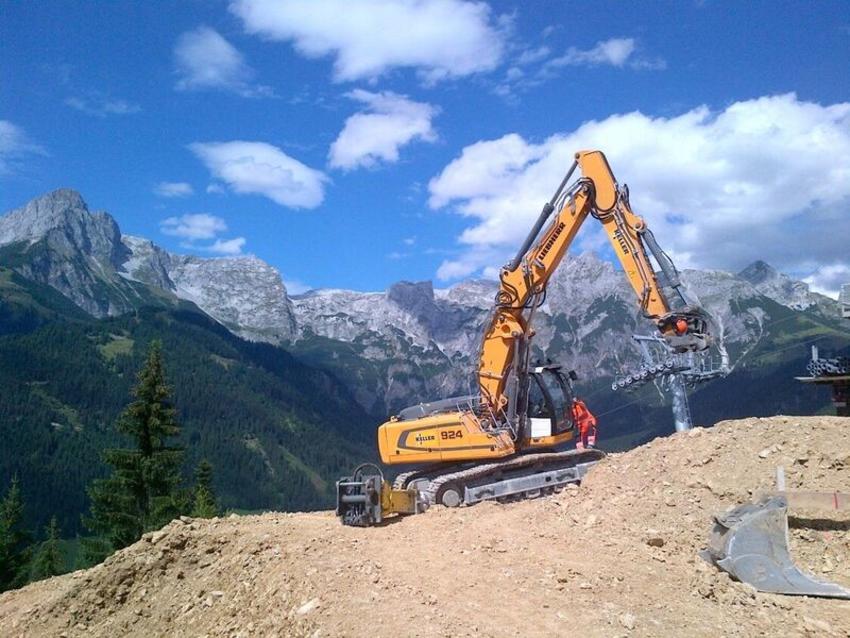Three years ago we introduced ductile piles in Austria. Today, they account for a significant part of the country’s displacement piling market. Product Line Manager Thomas Kirchmaier explains how their quality, fast implementation and cost-effectiveness make them an ideal solution for more markets around the world.

Made from specially made prefabricated cast iron pipes, ductile piles are designed for loads of up to 1,400kN and have a range of applications, including low-rise building foundations, bridge construction, pipeline foundations, slope stabilisation and geothermal energy piles.
Due to their ductile properties, the piles spring back into shape when driven at certain loads, removing the risk of deformity.
Cheaper and quicker to install
“One of the big advantages of ductile piles is that they can be driven with just a normal, lightweight excavator with a hydraulic hammer and special driving adapter or head press,” explains Thomas. “That means we don’t have to prepare the ground for large rigs, making them cheaper and quicker to install. It also makes them ideal for smaller or less accessible sites or in countries where the infrastructure or access to rigs are poor.”
Thomas says the piles can be installed at a rate of around 250-350 meters a day, comparable to vibro piles and more than bored piles – but without the need for large rigs or foundation work. There’s also no need to dispose of drill cuttings.
There are a few disadvantages to ductile piles. Noise emissions are comparably high and although vibrations affecting nearby buildings are unlikely, they do have to be considered. Deeper, weaker ground layers can also pose a problem where bored piling would be more appropriate. Furthermore, in Europe, there are only two suppliers of the pile material.
Thomas says he always stresses to colleagues that ductile piles aren’t always a replacement for other types of foundation products, but that they can provide a cost-effective alternative and be combined with other techniques.
Marketing
Although ductile piles have a sizeable, growing chunk of the market, Thomas says it’s been challenging to convince clients and even colleagues to use the new technique. He has, therefore, spent a lot of time travelling the country, making presentations and showing the evidence gathered from his previous company.
He’s also been spreading the word further afield. Ductile piles have been used in Italy and Germany and have played a significant role on a large project in France, where they were used to rebuild the slab of several grain silos. The piling work was carried out inside the silos and combined with bored piles to underpin the buildings in weak soil conditions.
So would Thomas like to see ductile piles used more widely within Keller? “Yes, of course,” he says emphatically. “And with our global product teams, we have a great way to present, discuss and share new products and ideas. I really believe, and the evidence shows, that ductile piles offer an ideal complementary method to our displacement piling techniques as well vibro products.”